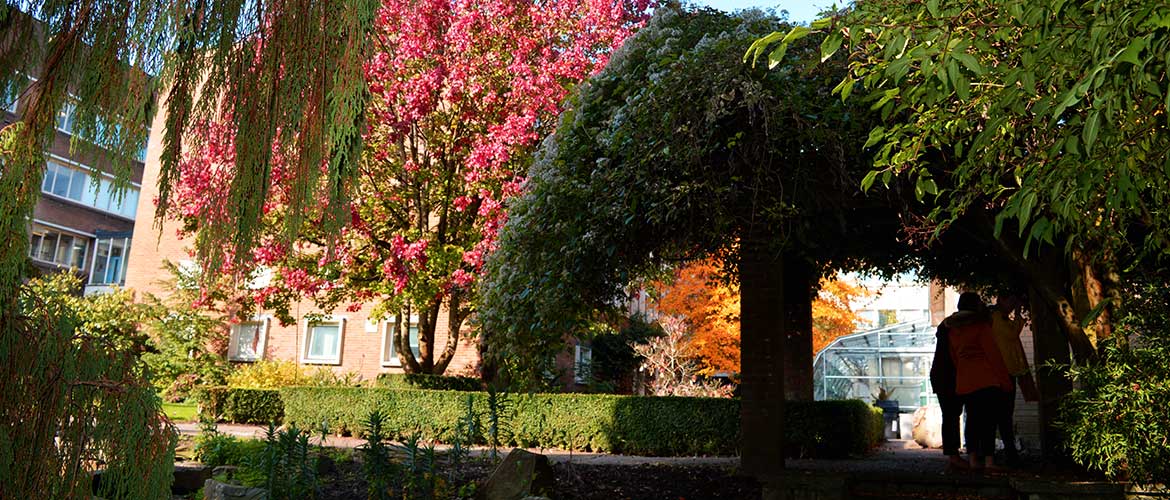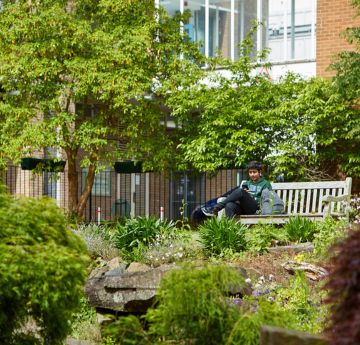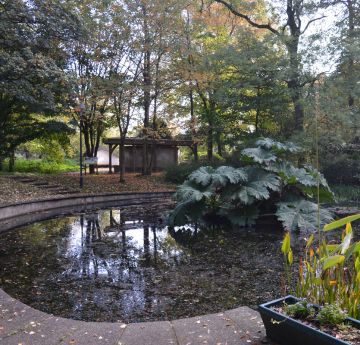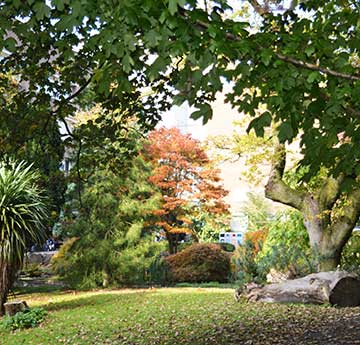
The plans for the listed Botanical Garden were first drawn up by pioneering British botanist and Dean of the Faculty of Science, Professor Florence Annie Mockeridge who retired in 1954 prior to the completion of the project. Dr Herbert ‘Bertie’ Street succeeded Professor Mockeridge, designing the final garden layout and overseeing its creation.
The garden today consists of a number of key features:
The Reptilliary: So called as it was originally home to a small group of tortoises which lived on the island. It was also used in a breeding programme for adders which were eventually released onto the Gower Peninsula.
The Ornamental Pool: The pool contains eels, sticklebacks and the occasional goldfish and is also home to invertebrates and dragonflies.
The Meadow: The small meadow within the gardens is listed and mown just once a year, increasing the University’s biodiverse landscape.
Woodland walk: University students have helped restore the woodland walk paths which were susceptible to flooding and now lead to the listed meadow. They also built a series of “bug hotels” and habitat piles along the route, using up-cycled materials.
The Bee Hives: In January 2014, bee hives were introduced to the Botanical Gardens. There are currently six hives within the site which are owned and tended by University staff.
The landscape of the Botanical Garden's grounds has been exploited to take advantage of the incredible micro-climates created by the surrounding buildings and natural terrain, allowing tender, exotic and often rare plants to be grown. The garden is also used as a nursery to increase existing plant stock and add to existing collections, improving biodiversity and facilitating learning and wellbeing. Students utilise the garden as a living laboratory for projects such as the study of bees, bats, newts and amphibians.



